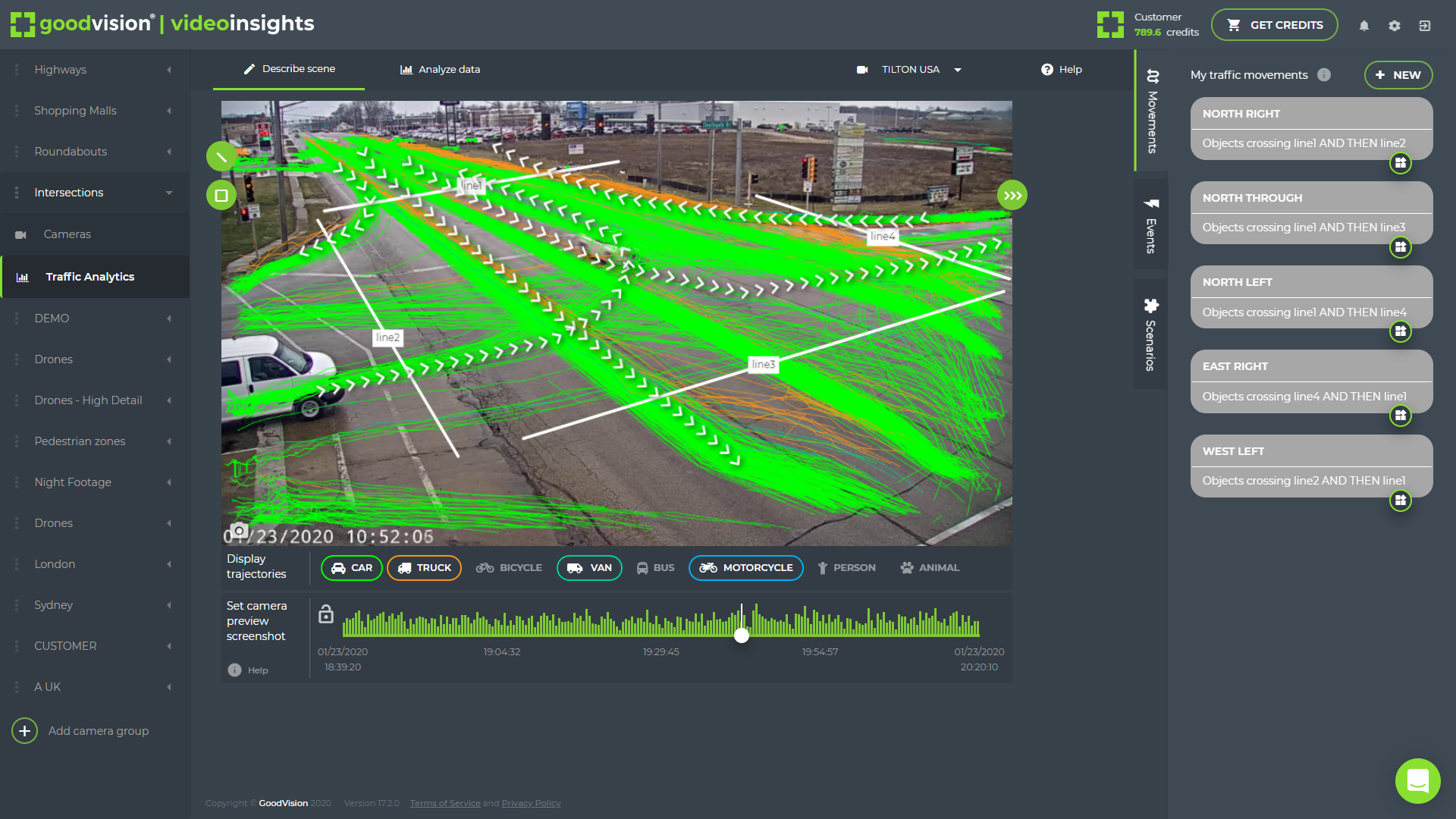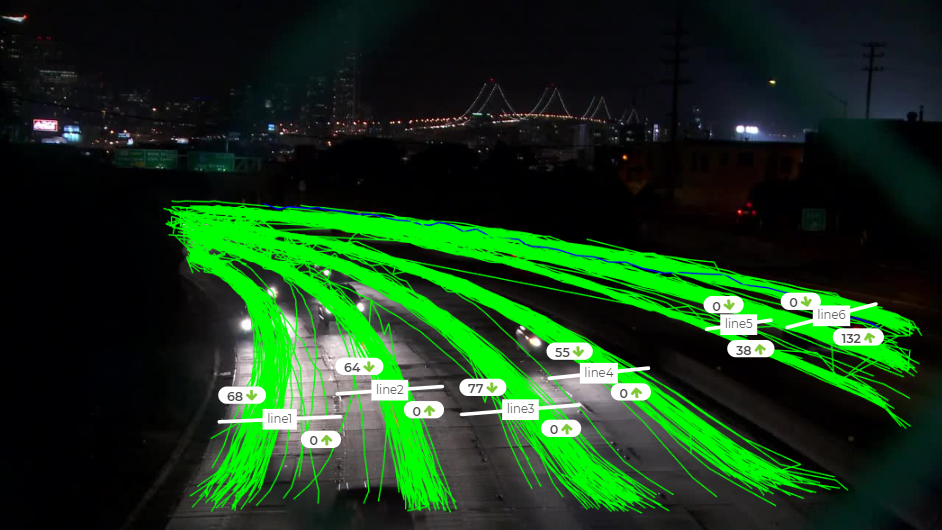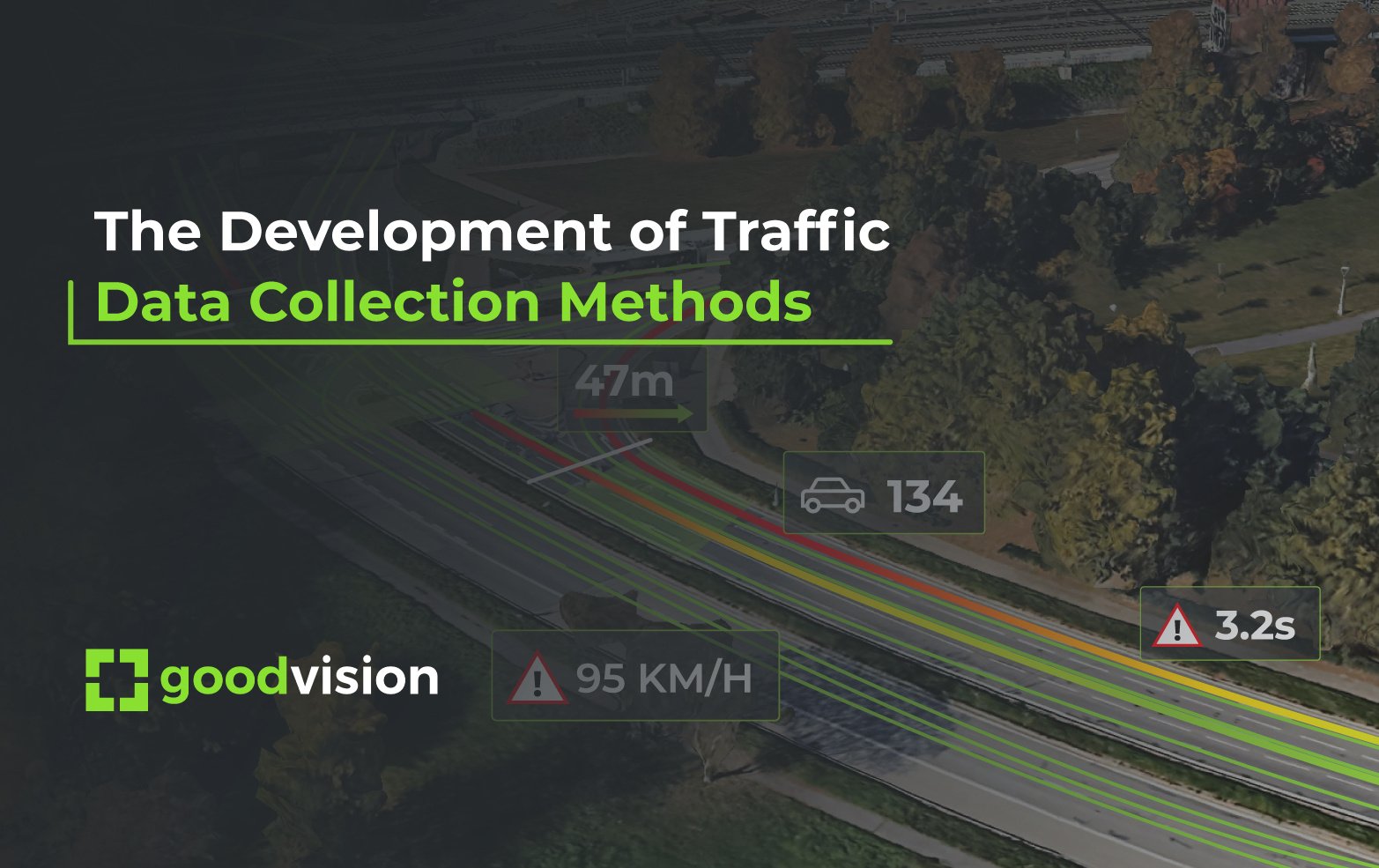The Development Of Traffic Data Collection Methods
Today a paper form or a mobile app requiring manual input is still highly used for traffic surveys. This article provides an overview of the development of the methods and technology used, from manual surveys, and surveys using technical devices to surveys conducted by intelligent software services.
%20(1).webp?width=679&height=382&name=1_HOGYL3qn2T9YfaXbF9nKaQ%20(1)%20(1).webp)
Recently I visited the conference “Traffic Behaviour in Data” organized by the Transport Research Centre of the Czech Republic, where traffic and transportation experts revealed their problems, methods and successful case studies on this topic. In this article, I am summarizing my notes and inspiration from the conference, especially regarding traffic data collection as the first mandatory stage for traffic analysis and modelling.
In 2017 there were 500 million surveillance cameras worldwide, producing 15 billion gigabytes of data weekly. This number doubles every 2 years and it is obvious that today, and in the future, most of the recorded camera footage will not be reviewed by human eyes. It is far beyond human capacity to do so.
Importance of traffic data collection
Traffic surveys aim to capture data that accurately reflects the real-world traffic situation in the area. It may be counting the number of vehicles using a road or collecting journey time information for example, but there are many other types of data that traffic surveys collect.
Traffic volume data — the number of traffic attendants passing through a certain section of the road over a certain period - is crucial information indicating the importance of the road. These data, as well as other data on land use and transport behaviour, are continuously acquired at regular intervals. This data is essential in order to fulfil the demand of the transport models, i.e. for:
- Interactive data presentation for analysis of the existing traffic
- Finding out problematic road locations and times
- Modelling of minor changes in the city’s transport network like closures, new sections, capacity changes, etc.
Jan Martolos (EDIP) comments on this: “Such approaches to traffic data allow us to extend the number of users of these data, enable political representatives of our cities to make more informed decisions, and the public can be better informed about the traffic situation.”
Traditional methods of traffic data collection
Traditional methods of collecting traffic data include human surveyors in terrain or from a video, invasive techniques using magnetic or piezo-sensors, radars and also the simple forms of image analysis using machine vision.
The most frequent traffic surveys include profile surveys to determine traffic intensities on a specific traffic profile with vehicle resolution on the category and the direction of movement. In addition, there are directional surveys on intersections, where the aim is to find out the intensity of vehicles in each traffic movement.
%20(1).webp?width=679&height=239&name=1_mYx_g8vrF_uAxkfFn6rd_g%20(1)%20(1).webp)
Profile surveys
Often used manual counting method using humans is to write to a prepared paper form where you can distinguish between couple of vehicle categories, the direction of the vehicle or the lane, sometimes also in a pre-selected time intervals (e.g. 60 minutes). Some progress from the paper method is a mobile app which incorporates the time intervals automatically and prevents human surveyors in faking the counts during their lunch pause or so.
Among the technical methods, there are various types of invasive hardware traffic counters designed to track single to two-band communication, pressure hoses, microwave radars, which are designed to monitor intensities on multi-lane communications, etc.
When the invasive sensor is used as a technical method for traffic data collection, there is often necessary to assign people to protect the device from stealing, which makes the method expensive and organizationally uncomfortable.
Directional surveys on intersections
The manual methods consists of counting only pre-specified directions using multiple human surveyors for each direction in the field on a paper, or the use of video footage and the humans who review it. The technical methods mostly utilize a camera monitoring system located at a height above the road and the footage is then processed using the automatic post-analysis of the video.
Requirements versus quality of results
Manual survey methods require the presence of personell — counters, supervisor, organizer, quality controller. From the point of view of staffing, they are highly demanding. On a one-way communication profile, one person is required for each lane, and this number should be increased if the traffic load is high. When counting traffic from the video, depending on accuracy required, each hour of video footage is reviewed in up to 3 hours. Subsequent transcriptions of data from the form into electronic form require additional time as well. Human surveys are suitable for a shorter period of time — up to 12 hours.
Accuracy achieved by manual methods is between 70% — 95% depending on the effort invested and is greatly affected by length of survey, time of desired delivery of results, fatigue of the staff, etc. The error rate is therefore changing in time.
With technical devices or automated collection systems it is possible to obtain also the data on speed, travel time, time-gaps, exact time of the passage of individual vehicles, which can then be used for more detailed analysis. With single-purpose sensors, the vehicle category is often determined by its length in a profile survey so it is strongly advisable to realize a calibration check. Also, one person’s supervision is appropriate for each device.

With modern artificial intelligence-based systems, the vehicle categories are determined by analyzing its visual appearance (you can see an example classification scheme). These devices can be easily used for directional intersection surveys. The advantage is that surveys can be conducted at any time interval and these systems are capable of classifying all categories of vehicles including bikers and pedestrians at pedestrian crossings with a single device — a camera.
The accuracy achieved by automatic artificial intelligence methods can be constantly above 95%. This accuracy is affected by the quality of the input data to the system — e.g. the video footage. You can find the guidelines here.
Implications of poor data collection
All of the limitations of the methods described above are leading to infrequent analysis or analysis based on small samples or outdated data. The organization’s ability to respond to needs is therefore limited by existing data collection and evaluation techniques. If the data is missing, there is an option to estimate traffic volume across the entire road networks using a mathematical model. But is it accurate?
Are cities and organizations really making decisions with 30-years implications based on potentially poor data?
Anyway, technical devices should be used if there is a requirement for high data accuracy — so which one to choose?
Selecting the right method for traffic collection
The following factors should be taken into account when selecting the method and carrying out a traffic survey:
- Accuracy — Counter — a person is subject to stress, fatigue, and his biological needs. These factors affect data quality. In the manual method, attention span of a counter decreases with the length of the survey, and thus the error rate is increasing. The sensor-based technical methods are not subject to these influences. For technical devices, a certain acceptable error rate is constant.
- Expenses —In the case of extensive surveys on multiple locations at one time, it is necessary to consider the financial difficulty of purchasing of technical devices that is worthwhile only if repeating such surveys. In the case of it is a one-time survey however, it is financially disadvantageous to purchase and deploy all necessary equipment. Therefore the majority of new video-analytical solutions for traffic analyses are distributed in the form of online solution — SaaS, with no deployment costs.
- Purpose of the survey — With most traditional methods it is necessary to determine up-front what data we need to measure and what it will be used for. Manual counters are not able to capture complicated traffic patterns or advanced data like travel time. They also fail at surveying pedestrian footfall or bicycle traffic, just because it is too complicated. Traditional technical sensors are able to capture more complicated traffic patterns, however often multiple sensors are needed to capture various types of traffic attendants at once.
Video-analytical solutions based on AI can capture all standard classes of motorized or non-motorized units on even very complex traffic movements at once. For example, GoodVision Video Insights doesn’t require specification of the job up-front, as it extracts all vehicle trajectories and the user can filter them later in the dashboard.
In conclusion, traditional data collection methods on traffic and transportation infrastructure are generally inefficient. They are either resource-intensive or time-consuming, providing single-purpose data only, and are expensive and complicated to organize/operate. There is definitely a huge space for innovation.

Artificial intelligence for traffic data collection
Based on the description above, it is possible to conclude that it is most advantageous to use the systems based on artificial intelligence combining existing camera equipment, multi-modal counting capabilities, complex traffic patterns monitoring and constantly high accuracy.
The need for robust data on the transportation infrastructure in the city is paramount to better understand performance and improvement needs and support informed and effective investment decisions. With advances in artificial intelligence and computing capacity, there is a significant opportunity to understand infrastructure performance in a short time and to respond to any questions on transportation issues with much more detail than in the past, at a much faster rate, and in a cost-effective manner. This technology allows traffic engineers to do things in the same way as hi-tech corporations.
GoodVision helps traffic engineers with traffic data collection from their own cameras and provides deep traffic data analytics with it’s ultimate one-stop analytical platform. Our product, called “Video Insights” is the first and only solution allowing traffic surveyors and modelers to collaborate and perform all their data-related tasks in a single platform. IT provides crucial baseline for traffic modelling, micro-simulations and traffic management. Video Insights is a SaaS product powered by state-of-art artificial intelligence running globally at my.goodvisionlive.com.





